House plants are a sure way to add life and beauty to any house. Whether indoor or outdoor, house plants need proper care and a good environment to thrive. They need adequate light, water, warmth and frequent monitoring to identify potential bug infestation. Most insects and bugs depend on plants for food and shelter; therefore, they are likely to infest your beautiful house plants. Color changes, wilted leaves, visible bugs, or retarded growth are predominant bug infestation signs.
Therefore, if you have a house plant, you should always be on the lookout for the above signs and arm yourself with the necessary information on how to get rid of them. However, it can be difficult to tell which bug you are dealing with, especially if you are new to the field of house plants. This guide contains a detailed list of some common house plant bugs and how to get rid of them.
Contents
4 House Plant Bugs and How to Get Rid of Them
Different house plants are prone to different bugs, but some of the most common ones are;
1. Scales
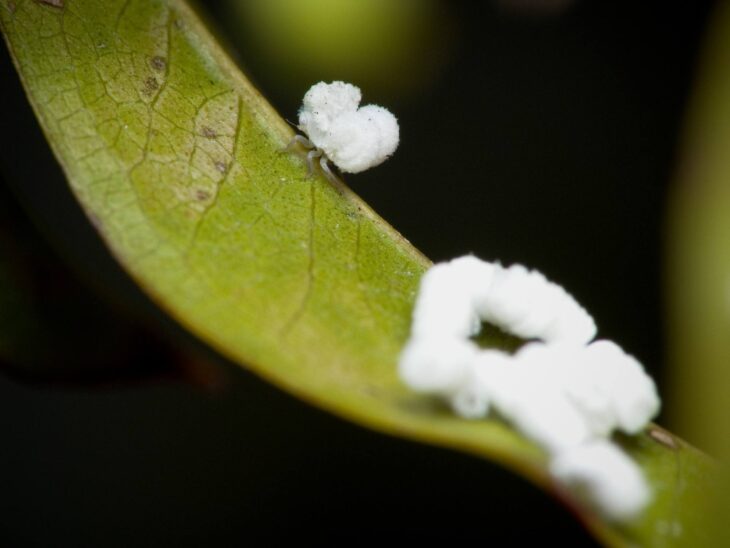
img source: thespruce.com
Scales are a common bug among many house plants. They appear in two groups; the armored and the soft scales. Armored scales secrete a waxy substance that acts as a simple shell to cover their bodies. The waxy secretion is not an integral part of their body and can be scraped off. The soft scales, on the other hand, produce a waxy substance that is an integral part of their body. These bugs create an unpleasant appearance on your plants. Scales vary in appearance depending on their age, species and sex. They resemble fish scales or some waxy colored masses stuck on the plant’s stem and leaves. Adult scales seem to be immobile with no visible legs.
To get rid of these bugs, you can start by regularly rubbing them off using cotton wool soaked in isopropyl alcohol. This rubbing or scraping off applies to the soft scales. For the armored scales, however, they need a strong chemical to smother them. You use chemicals such as canola or neem oil products. Additionally, you can take your indoor plant outside and spray it with insecticides such as imidacloprid, acetamiprid or cyfluthrin. Be sure to follow the instructions on the packaging while spraying.
2. Whiteflies
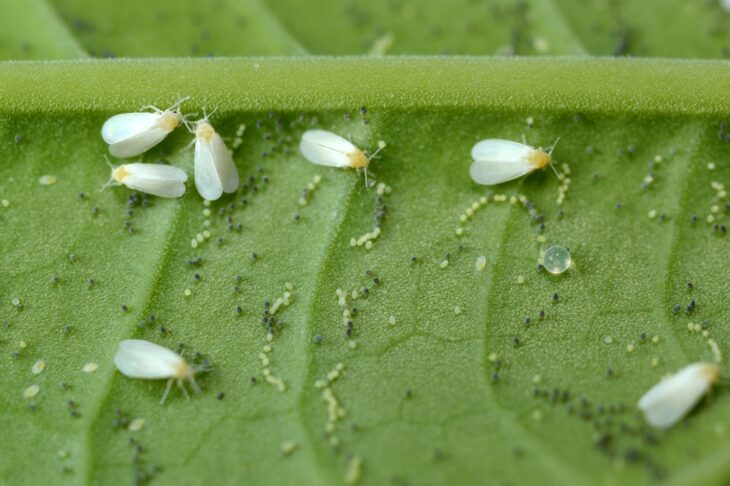
img source: almanac.com
Whiteflies are closely related to aphids and mealybugs. In their immature form, they do not move and are much like scales. Adults are small with a powdery white appearance, which gives them a close resemblance to tiny moths. When resting, they place their wings at a roof-like angle over their bodies. Whiteflies feed by sucking essential plant sap, which causes yellowing of leaves, stunted growth or death of the plant. They also produce honeydew, which gives the plant a shiny and sticky appearance creating a suitable environment for the growth of sooty mold. If you disturb a plant infested by whiteflies, they flutter around before infesting again.
To control these bugs, therefore, spray the infested plant with insecticidal soap or neem oil extract, especially on the leaves’ hidden lower parts. Additionally, you can spray outdoor plants using cyfluthrin or permethrin, acetamiprid and imidacloprid insecticides. When using insecticides, follow label instructions for safety.
3. Aphids
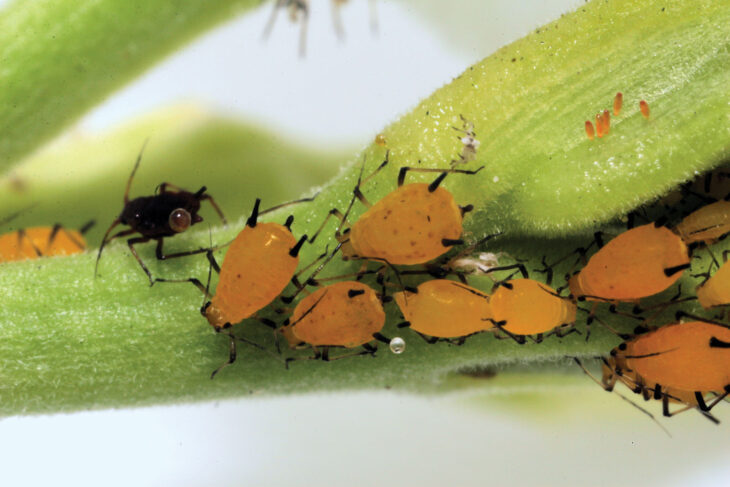
img source: britannica.com
Aphids are a common bug in house plants and though small in size, they can cause big problems. They are soft-bodied, usually green in color but may sometimes be yellow, black, red or brown depending on the species. Some have a woolly powdery coating, and they may be winged or wingless. They mostly invest in groups on the leaves’ underside. They have tiny needle-like mouthparts well adopted to sucking plant sap, causing stunted growth and yellowing of leaves. Like most plant bugs, they also produce honeydew that creates a shiny and sticky substance on the leaves suitable for sooty mold fungi’ growth. This appearance is not so impressive, and it makes your plant look unattractive, which is quite the opposite to its purpose.
For small aphid infestations, you can wipe them away using cotton swabs dipped in rubbing alcohol. You can also spray neem oil extract, insecticidal soap, imidacloprid, pyrethrins and other insecticides to control these bugs. It is advisable to use Imidacloprid plant spikes, which are stuck in the soil to control aphids.
4. Fungus Gnats
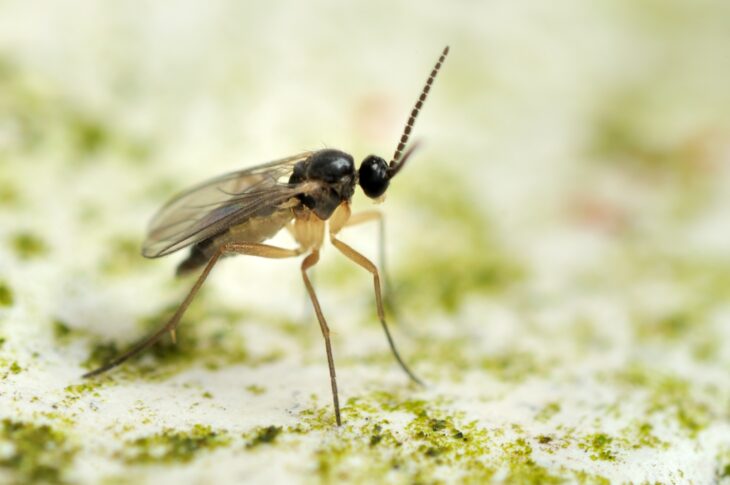
img source: almanac.com
Fungus gnats are another class of nuisance causing bugs. When you disturb an infested house plant, a cloud of tiny black flies lifts off the soils before settling back. Adult fungus gnats have a delicate appearance and are weak flyers mainly attracted to light. They are a nuisance to the plant and people in the surrounding environment. on the other hand, their larvae, which have a shiny black head, feed on organic matter or fungi in the soil. Larvae from some species, however, feed on the plant roots affecting its general health. Heavily infested plants lose their vibrant appearance and start to wilt. These larvae need water to survive and therefore, overwatering the potted plants creates a suitable habitat for them.
To control this bug, you may avoid overwatering your plant while avoiding the use of soil rich in organic matter like the peat moss soil. In extreme cases, you can use DIY chemical products to get the bug away from your plant for a long time.
Final Thoughts
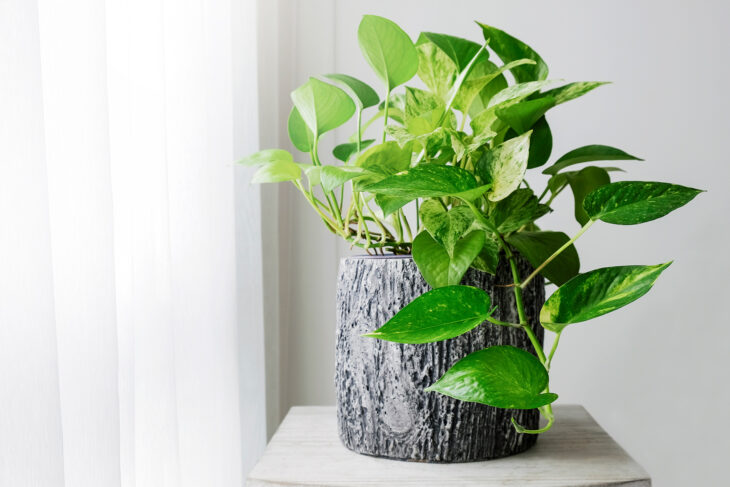
img source: webmd.com
Having house plants gives a unique touch of aesthetic value. But, some pests and bugs find your house plant an essential source of food and habitation. Their infestation usually has a negative effect on the appearance and general health of your plants. Dealing with these bugs that infest the plants can be overwhelming, especially if you are not familiar with gardening and the possible insecticides used to remove them. However, if you want professional services to help control house plant bugs, then click here to know more about how you can get rid of them. Reach out anytime you need help controlling house plant bugs.
